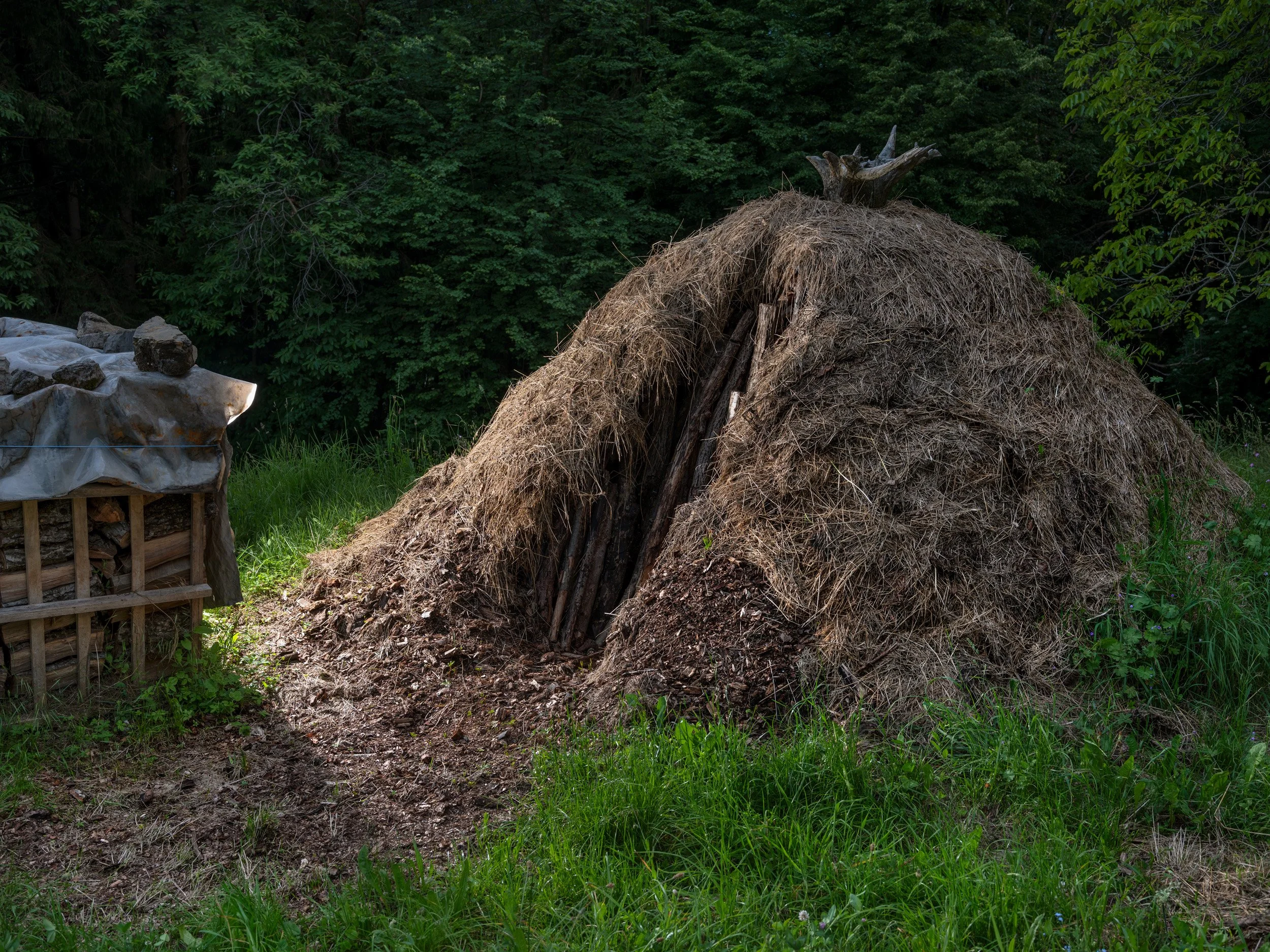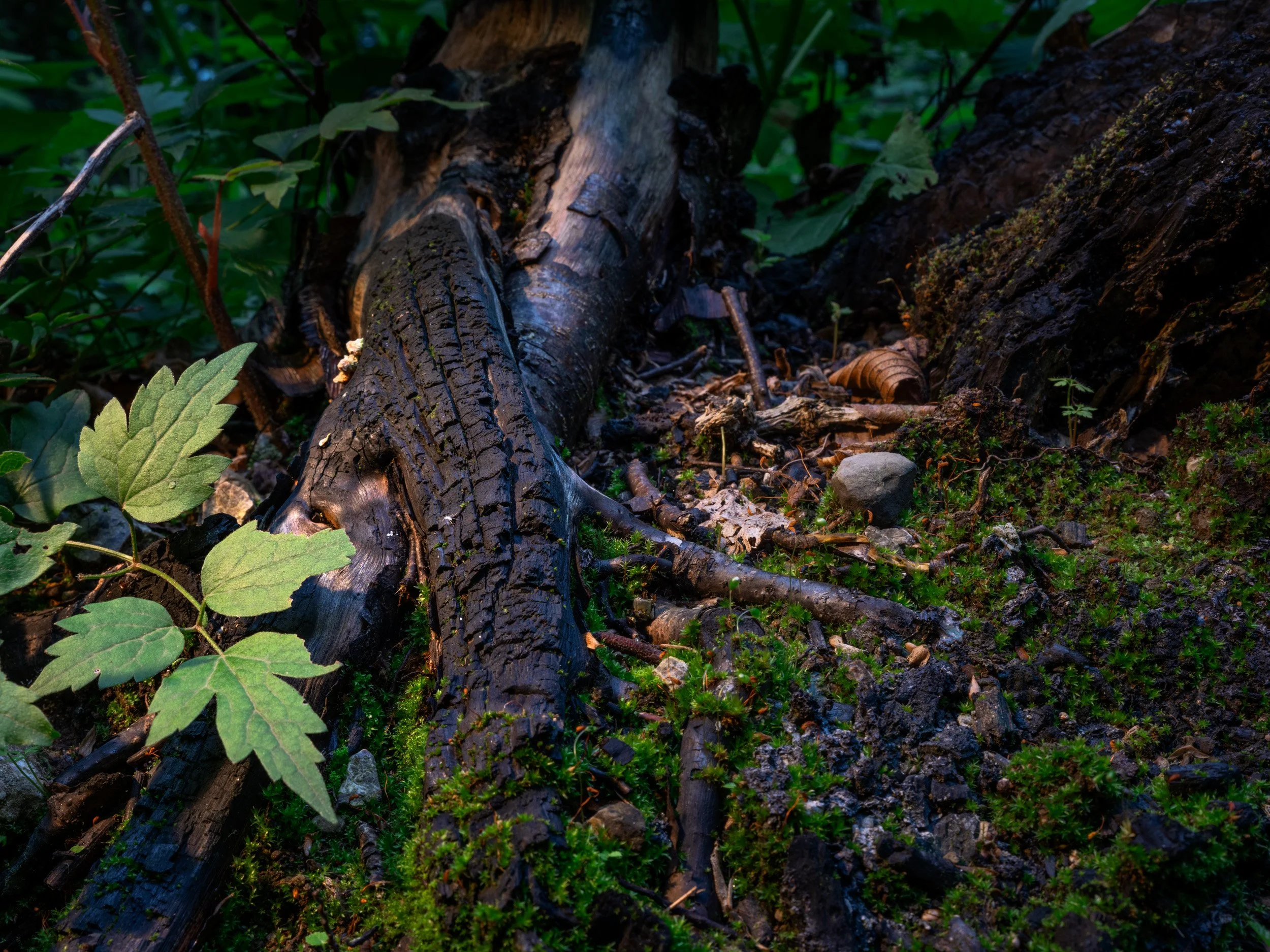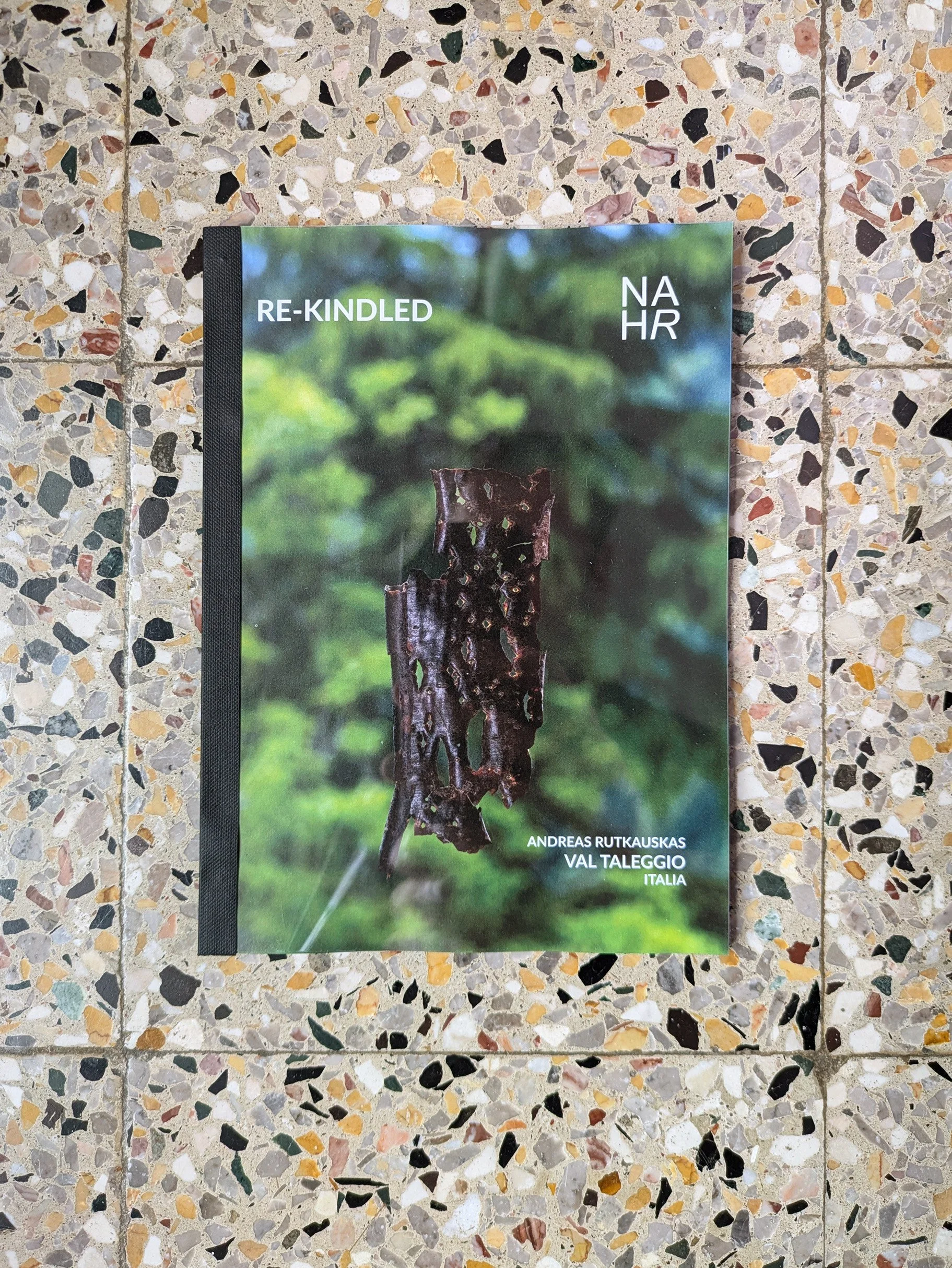RE-KINDLED
Nature, Art & Habitat Residency. FIRE: Renewal, Rituals, Power
VAL TALEGGIO, ITALY, JUNE 6 to JULY 2, 2024
Re-kindled explores fire’s mercurial nature in Val Taleggio, Italy, where the artist was a Fellow during the 2024 Nature, Art & Habitat Residency in Sottochiesa in July 2024.
Fire restores and destroys. Fire is transformative. The scars of fire heal quickly in this valley. Informed by local knowledge, but guided by firsthand experience, this photographic series explores how fire is deployed culturally in Val Taleggio, bringing together images of wood burned through NAHR community events, the residue of forestry and the evidence of arson. Fire can be understood in this context for its cultural value, destructive power, restorative capability and omnipresence.
Poiàt
“fire holds great cultural significance here, as evidenced by the rich history of the poiàt, a structure that was used for centuries to transform wood into charcoal by controlling combustion.”
Orders of Magnitude: From There to Here
During the 2023 fire season in my home province of British Columbia, 2,840,545 hectares of land burned due to wildfire. While this was a new record, breaking the one-million-hectare marker has not been uncommon since 2017. The area of land burned in Italy during the same period was roughly 100,000 hectares, and these fires burned primarily in Sicily and Calabria. In the month immediately preceding my fellowship with NAHR, I spent significant time within the Crater Creek fire zone of the Similkameen Valley. This fire alone consumed over 45,000 hectares of forest. This comparison is not being made to suggest that fire is insignificant in Val Taleggio. On the contrary, fire holds great cultural significance here, as evidenced by the rich history of the poiàt, a structure that was used for centuries to transform wood into charcoal by controlling combustion. Branches and earth strategically covered burning wood to reduce oxygen exposure, resulting in a slow, smouldering fire that yielded better-quality charcoal. The practice of cooking using fire and heating one’s home with wood is also more prevalent in Val Taleggio than in the Okanagan Valley. Forestry practices such as thinning and pile burning in Lombardy, as well as the tools used by their wildland firefighters, bear striking familiarity to a Canadian. Here, like there, the Pulaski (a combination of an axe and hoe) holds a prominent place within the firefighters’ resources.
When I applied to NAHR’s Fire: Renewal, Rituals, Power residency, I knew that the order of magnitude of fire in Val Taleggio would differ radically from that in Canada. Uncovering evidence of forest fires here has required some detective work, but through this process, I have had the opportunity to get to know members of the community and make my discoveries in the landscape as I searched for sites. Uncovering evidence of burns such as the aftermath of arson on Corno Zuccone, or the now subtle remains of the 2017 fire near Monte Cancervo in the location colloquially known as Pra di Gacc, took on greater meaning and brought intense excitement in profound ways as I made photographs.
I have also considered the connections between fire and water during my time in Val Taleggio. Intense thunderstorms and heavy rain hampered my efforts to get out and explore with my camera upon arrival. The intensity of these downpours was something I have grown unfamiliar with in my home community – an arid basin in the leeward aspect of the Coast Mountains. Potable water from springs can be found running in fountains within many communities and at trailheads, which is relatively uncommon in North America.
The forest regenerates quickly in Val Taleggio as its high humidity results in faster decomposition of burned wood. The scars of fire heal swiftly here, but this is not cause to drop one’s guard. The terrain is complex, steep and conducive to a fire spreading quickly once it starts. Communities can be vulnerable in the case of fire as narrow roadways and limited points of egress could make rapid evacuation challenging, and the climate is changing. Less precipitation and hotter temperatures may alter the Province of Bergamo’s resiliency to wildfire if measures are not taken. There, like here, fire represents a force of creation and of destruction. We will all need to learn to live more collaboratively with fire on the land.
- Written in Sottochiesa, June 2024
Crepuscular
“Uncovering evidence of forest fires here has required some detective work, but through this process I have had the opportunity to get to know members of the community, and make my own discoveries in the landscape as I searched for sites.”
Publication
A limited edition of ten copies of this booklet were printed and bound by CartOrlandini in Zogno on the occasion of the Nature, Art & Habitat Residency FIRE: Renewal, Rituals, Power. A PDF version is available for download.















